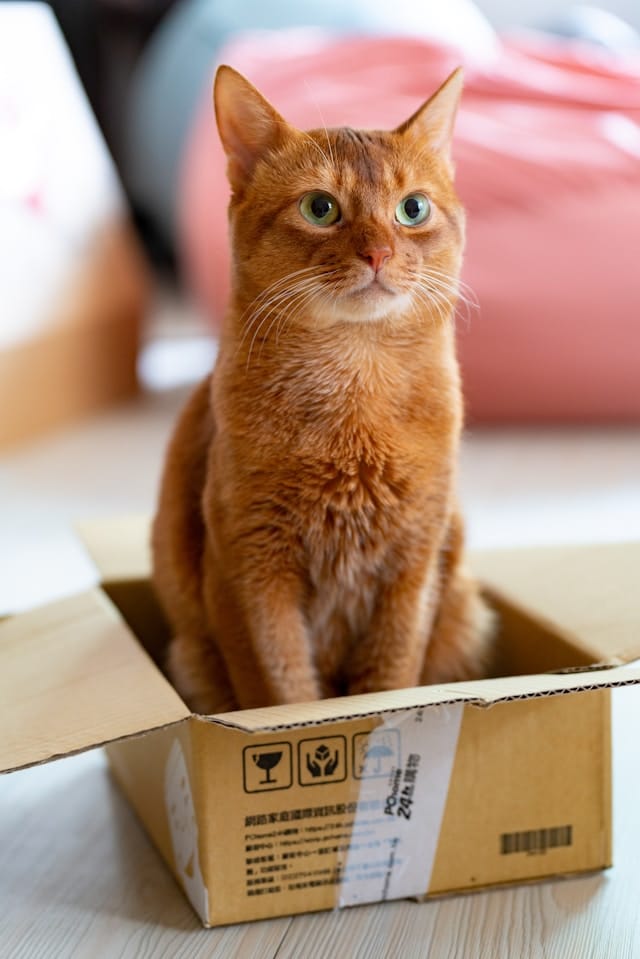How to Help a Cat Overcome Fear of the Automatic Litter Box?

If you’re a cat owner, one of the most critical aspects of your pet’s care is ensuring they are comfortable with their litter box. Problematic behavior related to the litter box is a common issue many cat owners face. With technology advancements, automatic litter boxes have revolutionized the pet industry. However, your cat might exhibit fear or skepticism towards this robotic contraption. In this comprehensive guide, we will delve into how to assist your cat in overcoming fear of the automatic litter box.
Understanding Your Cat’s Behavior Towards the Litter Box
Before you can start helping your cat adapt to the automatic litter box, it’s essential to understand their behavior. Cats, like all creatures, have naturally ingrained behaviors and instincts. Fear or hesitation towards unfamiliar objects, like an automatic litter box, is one such instinct.
A lire en complément : How to Encourage Natural Burrowing Behavior in Pet Rats?
Cats are typically territorial animals and changes in their environment can lead to stress and discomfort. A new automatic litter box is a significant change and could be the reason why your feline friend is hesitant. They might perceive this unfamiliar machine as a threat, due to its unfamiliar noises and movements.
Another aspect to consider is the location of the litter box. Cats prefer a quiet, secluded location where they feel safe. If the automatic litter box is placed in a high-traffic area, your cat might feel exposed and reluctant to use it.
Sujet a lire : What Are the Best Nutritional Plans for a Growing Great Dane Puppy?
Choosing the Right Automatic Litter Box
Choosing the right automatic litter box for your cat is the first step in helping them overcome their fear. There are various brands and designs available in the market, with varying features, sizes, and cleaning mechanisms.
Not all automatic litter boxes are alike. Some are equipped with sensors that trigger a cleaning cycle once your cat has exited the box, while others utilize a timer system. Some models are quieter, while others might make more noise. Choose a model that best suits your cat’s temperament and comfort level.
Also, consider the size of the litter box. It should be spacious enough for your cat to move around comfortably. A box that is too small will make your cat feel confined, exacerbating their fear.
Gradual Introduction to the Automatic Litter Box
Introducing your cat to the automatic litter box needs to be a gradual process. Abrupt changes can lead to stress and anxiety, making it harder for your cat to adjust.
Start by placing the new box next to the old one, but don’t turn it on yet. This will give your cat time to get used to its presence. Gradually, start sprinkling some of your cat’s used litter from the old box into the new one. The familiar smell will help your cat associate the new box as a safe place.
After a few days, turn on the automatic litter box while your cat is near it, so they can get used to the sounds it makes. Positive reinforcement also works well. If your cat approaches the automatic litter box, reward them with a treat or praise.
Monitoring Your Cat’s Health
Health issues can impact a cat’s litter box behavior. Medical problems such as urinary tract infections, bladder stones, or arthritis can make it painful for your cat to use the litter box, leading to avoidance behavior.
If your cat is persistently refusing to use the new automatic litter box, it’s crucial to rule out any health problems. A visit to the vet will help determine if there’s an underlying medical issue causing this behavior.
Regular cleaning of the litter box is also essential to keep track of your cat’s health. An automatic litter box simplifies the cleaning process by doing most of the work for you. But it’s still important to check the litter box regularly to monitor the color, consistency, and amount of your cat’s urine and feces.
Troubleshooting Common Problems
Even with the most cautious introduction, you might face some problems while transitioning your cat to an automatic litter box. Understanding these problems and their solutions will help you overcome them effectively.
One common issue is your cat doing their business outside the box. This might be because the automatic litter box is not clean enough. Cats are very particular about cleanliness, and a dirty box can deter them. Regular cleaning and maintenance of the automatic litter box will ensure it is always clean and inviting for your cat.
If your cat is still showing fear or reluctance, consider turning off the automatic features for a while. Let your cat use it as a regular litter box, and slowly reintroduce the automatic features once they are comfortable.
Remember, patience is key. It might take some time for your cat to get used to the new automatic litter box. But with the right approach and understanding, your cat will soon learn to embrace this handy piece of technology.
Optimizing Automatic Litter Box Setup
The placement and setup of the automatic litter box are vital factors that can significantly influence your cat’s acceptance of it. Cats value their privacy and prefer to do their business in a quiet and secure location. Hence, the litter box location should be carefully chosen.
Avoid placing the litter box in high-traffic areas of your home. A room that is frequently visited by family members or other pets might make your cat feel exposed and uncomfortable. The litter box should be positioned in a low-traffic area where your cat can use it without fear of being disturbed.
Also, ensure the location is easily accessible for your cat. If your cat has to climb stairs or jump over obstacles to reach the litter box, it might deter them from using it, especially if they are older or have joint problems.
The type of litter used in the automatic litter box is another important consideration. Some cats might have a preference for a particular type of litter due to its texture or smell. For instance, clumping litter might be favored by some cats due to its soft texture. Finding the right type of litter that your cat prefers can promote acceptance of the new litter box.
Remember, the goal is to make the automatic litter box as inviting as possible for your cat. A quiet, accessible location combined with their favorite type of litter can significantly increase the likelihood of your cat using the new box.
Conclusion: Patience and Understanding is Key
Transitioning your cat to an automatic litter box is not an overnight process. It requires patience, understanding, and consistent effort.
Understanding your cat’s behavior helps in addressing their fears and anxieties regarding the new litter box. Cats are creatures of habit, and any significant change, like introducing an automatic litter box, can cause them to feel uneasy. But with a gradual introduction, positive reinforcement, and creating a comfortable box setup, you can help them overcome their fear.
Remember, each cat is unique and what works for one cat might not work for another. It’s important to pay close attention to your cat’s behavior and adapt your approach accordingly. If your cat is still showing signs of box aversion or urine marking outside the box after several weeks, it might be wise to consult with a professional animal behaviorist or your vet to rule out underlying health issues.
Giving your cat the time they need to adjust, maintaining regular cleaning of the litter box, and being attentive to their health can eventually lead to successful adaptation. After all, the ultimate goal is to ensure your feline friend’s comfort and well-being while simplifying your pet care routine with the help of an automatic litter box.
